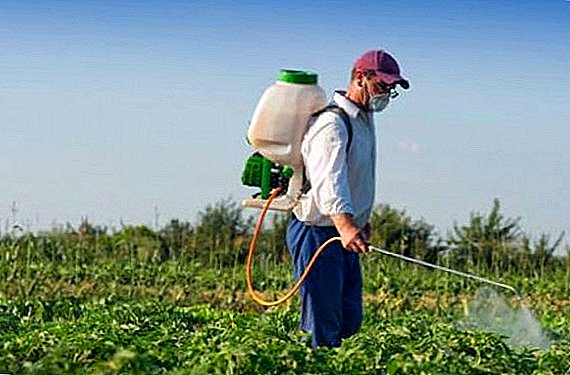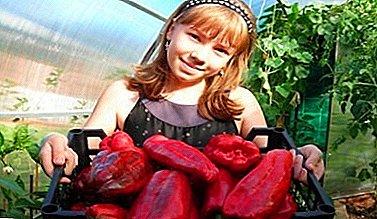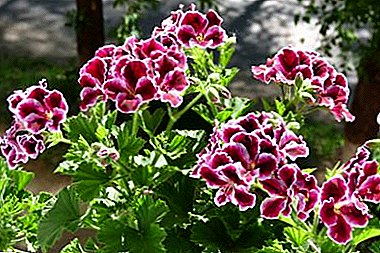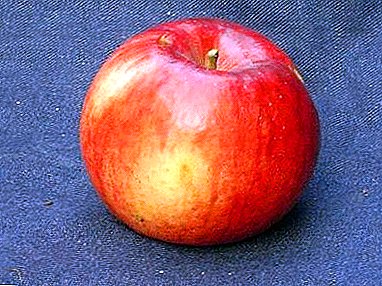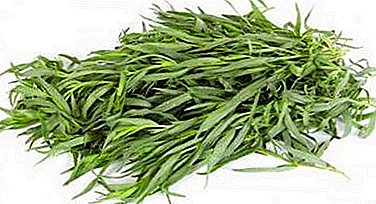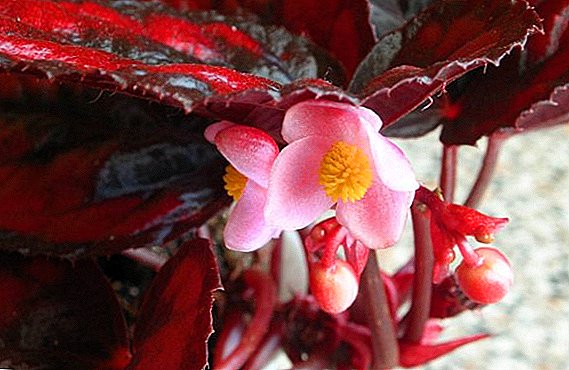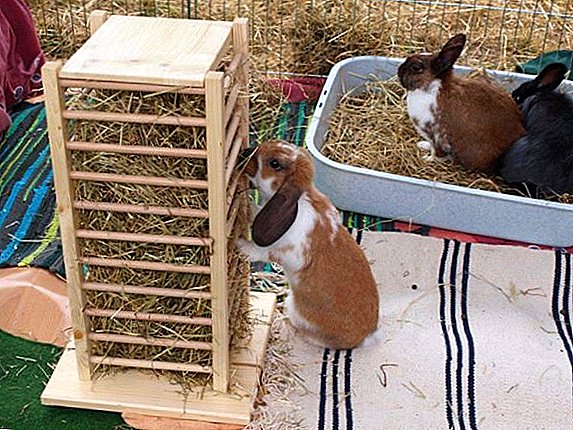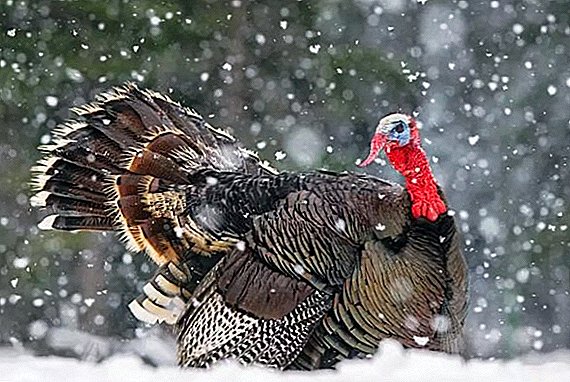 Every year the number of turkeys kept in the home farm conditions is increasing, since most modern farmers have already realized that the simplicity of keeping these birds and the subsequent benefit of breeding them far exceeds those for other species of birds. But if the process of caring for these birds in the summer and autumn does not constitute special difficulties, then ensuring the wintering of turkey flocks can sometimes cause certain problems. In this article we will look at all aspects of turkey keeping in the winter at home.
Every year the number of turkeys kept in the home farm conditions is increasing, since most modern farmers have already realized that the simplicity of keeping these birds and the subsequent benefit of breeding them far exceeds those for other species of birds. But if the process of caring for these birds in the summer and autumn does not constitute special difficulties, then ensuring the wintering of turkey flocks can sometimes cause certain problems. In this article we will look at all aspects of turkey keeping in the winter at home.
Optimum indoor temperature for keeping turkeys in winter
In order to provide your birds with comfortable living conditions in the house and try to make the wintering process as easy as possible for them, it is recommended to warm the room so that the average daily temperature inside does not fall below -5 ° C. This is the extreme limit of the indoor temperature for keeping turkeys.
Did you know? Skin formations on the neck and head of turkeys, according to some scientists, are a kind of trap for ultraviolet rays. They provide the process of penetration of the latter into the body of birds.
Among home farmers, it is believed that the optimum temperature for the normal operation of turkey organisms in the winter period is from -1 ° C to +3 ° C. It must be remembered that too high a temperature inside the house during the winter can cause significant damage to your birds, since they will suffer greatly from the temperature difference when going for a walk and returning to the room. 
Preparing the house for the winter
To maintain a large flock of turkeys, it is necessary to have a separate spacious poultry house, specifically prepared for wintering. The most important aspects of his training are: insulation, additional lighting and fresh bedding. Below you can read more about each individual aspect of the arrangement of such a room.
Space heating
If excessively cold winters are not characteristic of your area, then it will be sufficient to produce only a few manipulations, the complex of which is called natural heating, preventing excessive heat loss.
Read also about the winter maintenance of chickens and pigeons.
These include the following activities:
- caulk all the holes and holes in the house, except for vents;
- warm the outer walls with materials designed to conserve heat (foam, glass wool, foam concrete, etc.);
- close all window openings with thick cloth or a thick layer of polyethylene;
- Try to reduce the time during which the door to the house will be open to the minimum.
 These measures will serve to preserve the relative constant temperature inside the house, but when the air temperature is below -15 ° C, you will definitely need to equip the room with additional sources of artificial heating.
These measures will serve to preserve the relative constant temperature inside the house, but when the air temperature is below -15 ° C, you will definitely need to equip the room with additional sources of artificial heating.
These include:
- electric heaters;
- gas boilers;
- lamps and other infrared devices;
- wood stoves;
- thermal collectors.
Did you know? Immediately after the turkeys were brought from America to Europe, they were primarily valued for the quality of their feathers and were not perceived as another type of meat bird.
When installing any heat-generating device in the room, special attention should be paid to security measures and special attention should be paid so that your turkeys cannot harm themselves with its help. For example, if you made the decision to heat a poultry house with a stove, it must be installed in such a way that the bird itself could not get to the parts overheating during its operation. 
Litter
The legs of turkeys are the most tender part of their bodies. If you allow excessive hypothermia legs turkeys, then this will inevitably be followed by a series of various diseases, which often can result in the death of a bird. To prevent this from occurring, it is recommended that you regularly lay the floor in your house with bedding. It should be noted that if the room has a wooden floor on a solid foundation, you can do without it.
Learn more about building your own turkey barn.
The litter may consist of dry hay, straw, sawdust or peat. Layer thickness should be at least 2-3 centimeters, in addition, it is necessary to ensure uniform distribution of litter over the entire area of the room. The litter of hay or straw will need to be changed at least once every 10 days, and that consisting of sawdust or peat can be removed a little less often - once every three weeks. Such a frequent change of material is designed to prevent the development of fungal and infectious diseases among members of the pack. 
Additional lighting
In winter, it is very important to maintain the ability of males to fertilize turkeys, to keep the last egg production rates at high elevations. In addition, it is necessary to try to facilitate the molting period for the birds, also taking place in the winter period. To do this, you must take care of shaping the correct daylight modewhat many artificial light sources are meant to help you with.
Read also about the organization of lighting in the hen house in the winter.
When keeping young stock, it is enough to have a small amount of natural light, since the light day, sufficient for adequate development of the poults, is only 7-8 hours. However, for adult birds, the duration of daylight should be at least 14 hours; otherwise, the egg production rates of the flock will significantly decrease. As a light source, you can use any lamp at the rate of 1 light bulb per 3 square meters of room. 
Content of turkeys in the winter in a polycarbonate greenhouse
Popular modern material for greenhouses - polycarbonate, it can be used with great advantage for keeping turkeys in the winter. First of all, when building such a greenhouse, you should take care of its proper size. Keep in mind that when building a greenhouse, it is necessary to allocate at least 1 square meter of space to each individual.
Important! Given the transparency of the walls of polycarbonate, it will be possible to save a little on the lighting, including the light only after sunset.
The lower part of the greenhouse is best closed with boards or slate sheets, because turkeys can damage it with their powerful beaks.  Elements of additional heating should preferably be placed somewhere outside the greenhouse itself, so as not to violate the integrity of its structure and provide the birds with more free space. Feeders, drinkers and perches are best made removable, so that they can be removed at any convenient time for you.
Elements of additional heating should preferably be placed somewhere outside the greenhouse itself, so as not to violate the integrity of its structure and provide the birds with more free space. Feeders, drinkers and perches are best made removable, so that they can be removed at any convenient time for you.
Learn more about polycarbonate greenhouses: the choice of polycarbonate and finished greenhouses, the advantages of different types of foundations, the manufacture of polycarbonate greenhouses, fixing the polycarbonate on the metal frame.
The floor in the greenhouses should also be covered with a bedding. Before using the greenhouse for its intended purpose in the spring, it must be properly washed, aired and the earth should be dug up. An idle greenhouse can also be used as a walking yard for poultry, which is especially important at a time when the temperature on the street is much lower than that which turkeys can tolerate without harm to their health.
Video: turkey content in the greenhouse
What temperature can turkeys withstand walking in winter
Turkeys are birds that, unlike chickens and geese, are able to withstand sufficiently low air temperatures. The main condition for maintaining the vitality and health of turkeys while walking in the street is snow-covered walking ground. This is due primarily to the fact that the turkeys' legs are not covered with feathering and do not have serious muscle and fat mass and, accordingly, are prone to various kinds of hypothermia and frostbite, which can significantly harm the birds.
Read also about home turkey breeds, breeds and broiler turkey breeds.
In addition, it must be remembered that turkeys extremely negatively tolerate windy weather and various drafts, especially in combination with sub-zero temperatures, therefore it is necessary to try to let them walk only in the absence of wind. The average temperature that these birds are able to withstand on the range without any harm for their organisms is within -12 ... -17 ° С. 
Sand and ash baths for the prevention of parasites
In the cold season, any poultry needs additional protection against a variety of parasites. The most common type of parasite found on any poultry with developed plumage is a variety of fluff eaters. In total, about 17 species of these insects that are actively parasitic on turkeys are known to modern science.
Since the immune system of your wards and their organisms as a whole are not in the most active state (due to the molting period, reducing the percentage of green fodder in the diet and slowing down the metabolic processes in the body), it will not be superfluous to help the birds deal with the parasites ash baths.
Important! Feathers from sand-ash baths must be removed from the sand mixture once every several days and burned to avoid further spread of parasites.
It is quite simple to organize such a preventive measure - it’s enough to place large (within such birds so that the bird can fit in them) containers and fill them with a mixture of sand, dry wood ash and dry clay in proportions 1: 1: 1. If parasites suddenly begin to annoy the animal, it will independently begin to fight them, conducting “bathing” sessions (allowing the sand streams to move freely between the feathers). This will effectively clean the birds' feathers from parasites, larvae and their eggs. 
How to feed turkeys in the winter at home
If during the summer period most of the day turkeys are fed using the grazing method and can be fed only once, then in winter you will have to significantly increase feed costs. Below you will find approximate recommendations on how to make turkey menu in winter:
- It must be remembered that birds should eat at least three times a day, preferably at the same time.
- In addition to the feed, the feeder also needs to add a small amount of fine gravel and stones, which are necessary for birds to work properly in their digestive system.
- All feeders should be located so that each bird has the opportunity to find a place for them, as far as possible from the walls and, in the event that there are several of them, from each other.
We advise you to read about feeding animals in the winter: chickens, ducks, rabbits.
Approximate diet
The diet of turkeys in the winter should be largely flavored with a large number of different protein components, but not of animal origin, since this species of birds does not tolerate the consumption of any food of an animal nature. In the morning and for evening feeding, feathery should be given a variety of grains (wheat, barley, oats, rye, etc.) or mixed feed, and at lunchtime it is better to feed them with some mash or wet food.  Here is a list of wet feeds available in winter:
Here is a list of wet feeds available in winter:
- potato and its cleaning (only not green!);
- boiled carrots;
- ground beetroot;
- hay and dry herbs (exclusively in steamed form);
- cabbage leaf;
- apples;
- various chestnuts and acorns;
- needles from coniferous trees.
Wet mash is prepared from any crushed grain or porridge with the addition of any of the above listed wet ingredients. Care must be taken to ensure that the mash does not get too wet, because then it can get into the nostrils of birds and provoke the development of the inflammatory process.
Read also about the types and composition of feed.
To check for humidity, it is recommended to take a small amount of the mash in the hand and squeeze it into a fist. If the food crumbles, it can be given to birds, and if it spreads, it will need to thicken further. 
Vitamin and mineral supplements
Turkeys, like any other bird, in the cold season require metabolic support in the form of a variety of vitamin and mineral supplements. In the cold period, some prefer to simply give their pets more green food, but this tactic does not always justify itself because of too high energy costs for birds to compensate for molting, to fulfill the need for warming the body and general acceleration of metabolic processes:
- In general, you need to know that three vitamins are vital for birds in winter: A, D and E. This vitamin complex can be found as a finished product in any veterinary pharmacy called Trivit or Tetravit. Most often, such additives are introduced into the feed immediately before feeding the birds, although their intramuscular administration is also possible. The dosage is 7-10 milliliters for every 10 kilograms of feed.
- Mineral supplements are primarily needed to ensure adequate metabolic processes, successful and easy molting, as well as for the formation of eggs. The easiest way to provide birds with a sufficient amount of such additives in the least expensive form for owners is to add a small amount of small particles of chalk, lime, salt, shells or shell rock to the feed. It is also possible to use more expensive veterinary supplements, for example, Agroservice, Ryabushka, Rural Yard, etc., which must also be mixed with feed.
Video: winter turkeys
So, we hope that this article answered all your questions regarding the content of turkeys in a home farm in the winter. Remember, only paying enough attention and care to your birds, you can count on substantial profits and the development of your business. Carefully monitor the health of the wards, keep them in decent conditions and they will definitely give you back your care a hundredfold!


